The Quality Toolbook How to create a Decision Tree
Post on: 16 Март, 2015 No Comment

How to do it
This should be a relatively short list, typically of between two and four actions, particularly if the Decision Tree is to be multi-level, in order to minimize the complexity of the final Tree. This may start as a longer list which is first whittled down to a few strong contenders amongst which the best choice is difficult to identify.
Events may be dependent or independent, as follows:
Dependent events are a direct consequence of performing an individual action, and are thus different for each action. For example, the action of increasing furnace temperature to reduce firing time may also result in more scrap through cracked pots.
Independent events do not depend on the actions, and are just as likely to happen whatever action is taken. For example, the dynamics of the national economy are not affected by an investment in a new product, yet may still affect future sales.
Fig. 1. Payoff table
This measurement will require a common unit, related to the original objective (step 1). This is typically a financial measure, but can be others, such as time, efficiency, etc. It can be useful to include the cost of performing the actions in this figure, rather than just using the return gained. Thus ‘profit’ or ‘return on investment’ may be better than simple ‘revenue’.
Fig 2. Basic Decision Tree
Maximin. which looks for the best worst-case situation, and is the ‘pessimist’s choice’. Thus, in Fig. 3, A2 is selected.
-
Maximax. which seeks to maximize to profit by selecting the option with the highest potential return. It can thus be viewed as the ‘optimist’s choice’. Thus, in Fig. 3, A1 is selected.
-
Minimax Regret or Opportunity Loss. which takes the conservative approach of seeking to minimize the loss incurred should the best action not be taken. Thus, in Fig. 3, A1 is selected.
-
Expected Monetary Value. or EMV. includes the concept that an item which is less likely to occur is also worth less. This is a very common strategy, based on the sound statistical and financial principle that effective value is equal to actual value multiplied by probability of occurrence. Thus, in Fig.3, A2 is selected.
-
Expected Opportunity Loss. which combines the Minimax Regret with the statistical principles of EMV to give a conservative statistical approach. Thus, in Fig. 3, A3 is selected.
-
Utility puts other personal values on events and actions. For example, actions may be rejected if there is any risk whatsoever of loss.
Fig. 3. Calculations for alternative decision strategies
Ways of determining these figures include:
Asking people in surveys of customers, employees, etc.
Measuring aspects of processes, such as time taken, defects, etc.
Identification and extrapolation of previous trends.
Investigating variation.
Probability figures are usually shown as being between 0 (no chance) and 1 (certainty), although percentages may be more familiar and can be used instead as they are directly equivalent. Event probabilities, particularly for dependent events, can be shown in a table, as illustrated in Fig. 4.
The final figures may be written on the Decision Tree diagram. Put them in parentheses underneath the appropriate event lines.
Fig. 4. Probabilities of dependent events
Fig. 5. Adding action values (for EOL strategy)
Fig. 6. Multi-level Decision Tree














